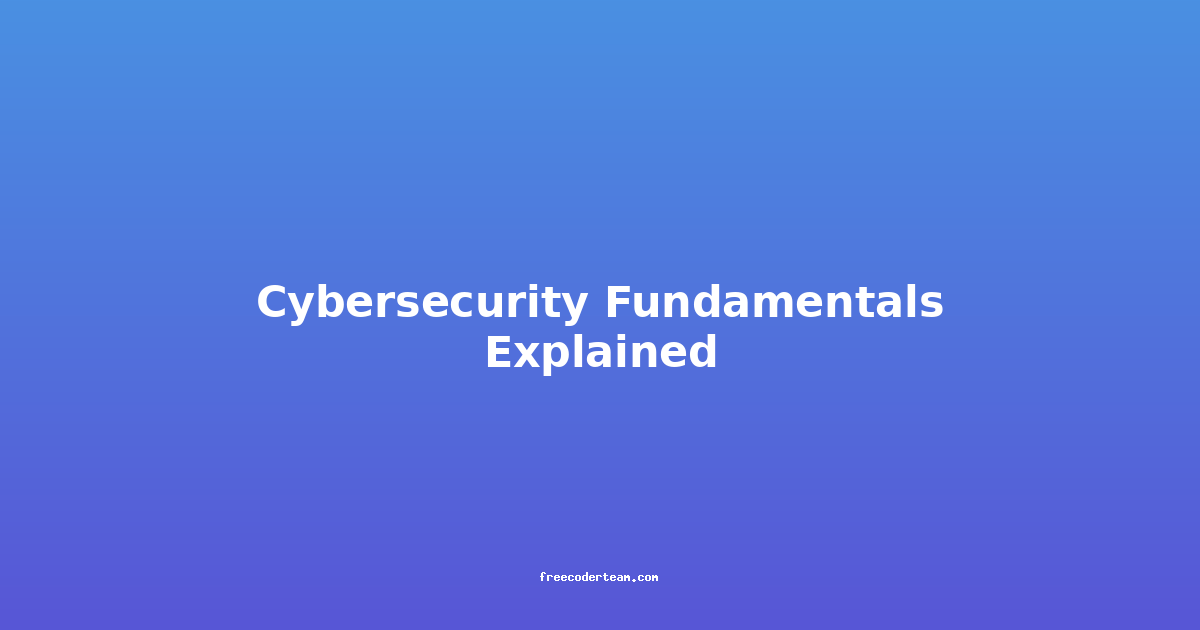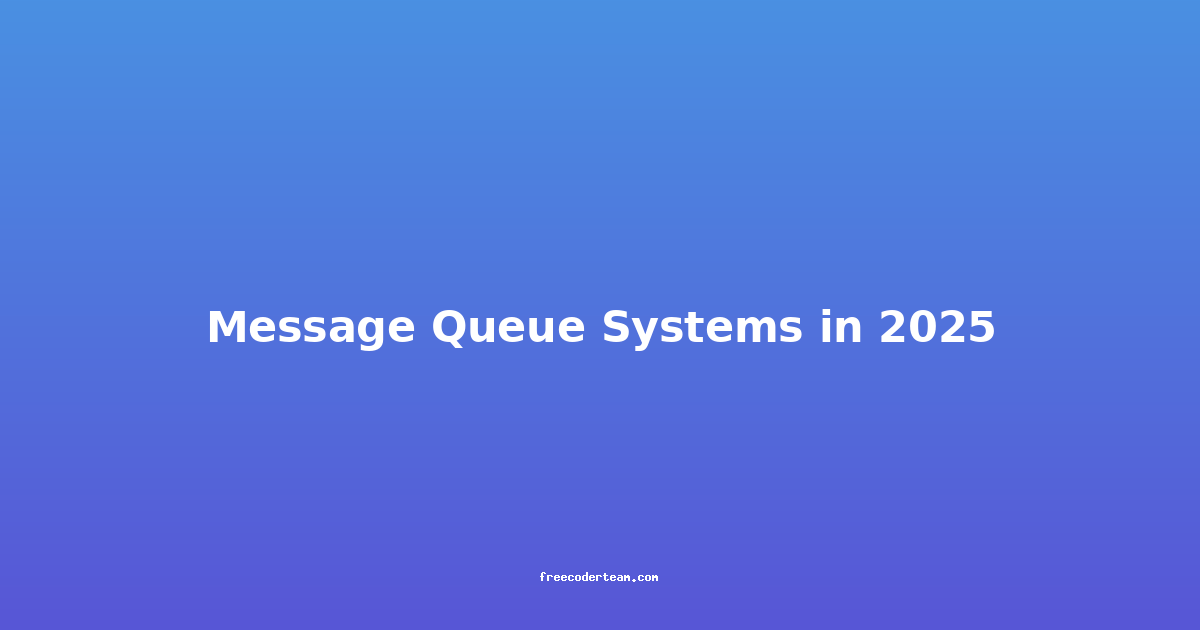Infrastructure as Code (IaC) Tutorial: Automating Your Infrastructure for Efficiency and Consistency
Infrastructure as Code (IaC) is a modern approach to managing IT infrastructure that treats infrastructure components—such as servers, networks, databases, and even entire cloud environments—as programmable resources. By writing code to define and manage infrastructure, teams can achieve greater consistency, reliability, and scalability compared to manual, on-the-fly configurations.
In this tutorial, we’ll explore the fundamentals of IaC, walk through practical examples, and discuss best practices to help you get started. Whether you’re a DevOps engineer, a systems administrator, or a developer looking to streamline your infrastructure management, this guide will provide you with actionable insights and real-world examples.
Table of Contents
- What is Infrastructure as Code?
- Why Use Infrastructure as Code?
- Key IaC Principles
- Popular IaC Tools
- Getting Started with IaC: A Practical Example
- Best Practices for IaC
- Challenges and Mitigations
- Conclusion
What is Infrastructure as Code?
Infrastructure as Code (IaC) is the practice of managing and provisioning IT infrastructure using machine-readable, version-controlled files written in code. Instead of manually setting up servers, configuring networks, or deploying applications, you define the desired state of your infrastructure in code and let automation tools handle the execution.
For example, instead of logging into a server and running commands to install software or configure settings, you write code that specifies how the server should be configured. When you run the code, the tool ensures that the infrastructure matches your defined state.
IaC is often compared to declarative programming, where you specify what you want, and the system figures out how to achieve it. This contrasts with imperative programming, where you write step-by-step instructions for how to achieve a goal.
Why Use Infrastructure as Code?
IaC offers several compelling benefits:
-
Speed and Efficiency: Automating infrastructure deployments significantly reduces the time and effort required to set up environments. You can provision new servers, databases, or entire environments in minutes.
-
Consistency: With IaC, you define your infrastructure once and deploy it repeatedly. This eliminates human errors and ensures that all environments—development, staging, and production—are identically configured.
-
Version Control: IaC files can be stored in version control systems like Git, allowing you to track changes, collaborate with team members, and roll back to previous states if needed.
-
Reusability: Once you define your infrastructure in code, you can reuse the same configurations for multiple projects or environments.
-
Documentation: IaC files serve as living documentation of your infrastructure. Anyone can review the code to understand how the environment is set up.
-
Cost Efficiency: By automating infrastructure management, you reduce the need for manual intervention and can better optimize resource usage.
Key IaC Principles
To effectively use IaC, follow these core principles:
-
Declarative Over Imperative: Define the desired state of your infrastructure, not the steps to achieve it. This makes the code easier to understand and maintain.
-
Idempotency: Ensure that running your IaC code multiple times produces the same result. This is critical for automation and error recovery.
-
Version Control: Treat your IaC files like any other codebase. Use version control to track changes, collaborate, and maintain a history of your infrastructure.
-
Separation of Concerns: Keep your IaC files organized and modular. Separate concerns such as networking, storage, and application configuration into distinct files or modules.
-
Testing: Use testing frameworks to verify that your IaC configurations work as expected before deploying to production.
Popular IaC Tools
Several tools are widely used for IaC. Here are some of the most popular ones:
-
Terraform: An open-source tool by HashiCorp that allows you to define and provision infrastructure across multiple cloud providers and on-premises environments. Terraform uses a configuration language called HCL (HashiCorp Configuration Language).
-
Ansible: A configuration management and automation tool that uses simple YAML files to define infrastructure. Ansible is agentless, meaning it doesn’t require software to be installed on target machines.
-
CloudFormation: Amazon’s native IaC tool for AWS. It uses JSON or YAML templates to define AWS resources.
-
Pulumi: A modern IaC tool that allows you to define infrastructure using familiar programming languages like TypeScript, Python, or Go.
-
Chef: A configuration management tool that uses Ruby DSLs to define infrastructure. It is widely used in on-premises and hybrid cloud environments.
-
AWS CDK (Cloud Development Kit): A set of libraries that allow you to define AWS infrastructure using programming languages like TypeScript, Python, or Java.
For this tutorial, we’ll use Terraform as it is one of the most popular and versatile IaC tools.
Getting Started with IaC: A Practical Example
Let’s walk through a practical example using Terraform to deploy a simple web server on AWS.
Step 1: Choose Your IaC Tool
For this tutorial, we’ll use Terraform. You can download Terraform from the official website.
Step 2: Define Your Infrastructure
Create a directory for your project and initialize Terraform:
mkdir my-iac-project
cd my-iac-project
terraform init
Next, define your infrastructure in a Terraform configuration file (main.tf). For this example, we’ll create an EC2 instance on AWS:
# main.tf
provider "aws" {
region = "us-east-1"
}
resource "aws_instance" "example" {
ami = "ami-0c55b159cbfafe1f0" # Amazon Linux 2 AMI
instance_type = "t2.micro"
tags = {
Name = "MyWebServer"
}
}
In this example:
provider "aws"specifies that we’re using AWS as the cloud provider.resource "aws_instance"defines an EC2 instance with a specific AMI (Amazon Machine Image) and instance type.
Step 3: Deploy and Provision
Plan the deployment to see what Terraform will do:
terraform plan
This command shows you a preview of the changes Terraform will make. Review the output to ensure everything looks correct.
Apply the changes to provision the infrastructure:
terraform apply
Follow the prompts to confirm the changes. Terraform will create the EC2 instance as defined in your configuration.
Step 4: Version Control and Collaboration
Treat your Terraform files as part of your codebase. Use Git to version control your IaC:
git init
git add .
git commit -m "Initial commit of IaC for EC2 instance"
This allows you to collaborate with team members, track changes, and roll back to previous versions if needed.
Best Practices for IaC
To maximize the benefits of IaC, follow these best practices:
-
Use Version Control: Store your IaC files in a version control system like Git. This enables collaboration, change tracking, and rollback capabilities.
-
Define Everything in Code: Ensure that all aspects of your infrastructure, including configurations, are defined in code. Avoid manual changes.
-
Adopt Infrastructure as Code Review: Treat IaC changes like code changes. Implement code reviews to catch errors before deployments.
-
Automate Testing: Use testing frameworks to validate your IaC configurations. Tools like Terratest for Terraform can help simulate deployments and verify expected behavior.
-
Parameterize Your Configurations: Use variables to externalize values that change between environments (e.g., region, credentials). This makes your IaC reusable.
-
Enforce Security and Compliance: Use tools like Terraform Policy Language (TFPL) or Pulumi Policies to enforce security and compliance rules.
-
Document Your Infrastructure: Include comments and documentation in your IaC files to explain complex configurations.
-
Use State Management: Terraform uses a state file to track the current state of your infrastructure. Use a remote state backend (e.g., AWS S3) to share the state between team members and prevent conflicts.
Challenges and Mitigations
While IaC offers many benefits, it also presents some challenges:
-
Learning Curve: IaC tools can have a steep learning curve, especially for those new to automation. Invest time in training and documentation.
-
Complexity: As your infrastructure grows, your IaC files can become complex. Use modular design and separation of concerns to keep your codebase maintainable.
-
Drift: Infrastructure drift occurs when the actual infrastructure deviates from the IaC definition. Regularly run
terraform planto catch and address drift. -
Security Risks: Misconfigured IaC can lead to security vulnerabilities. Use tools like tfsec or Checkov to scan your IaC for security issues.
-
Version Control Conflicts: When multiple team members work on the same IaC files, conflicts can arise. Use version control best practices and automated conflict resolution tools.
Conclusion
Infrastructure as Code is a transformative approach to managing IT infrastructure. By treating infrastructure as programmable resources, teams can achieve greater efficiency, consistency, and scalability. Tools like Terraform, Ansible, and AWS CloudFormation make it easier than ever to automate infrastructure provisioning and management.
In this tutorial, we explored the fundamentals of IaC, walked through a practical example using Terraform, and discussed best practices for successful adoption. By adopting IaC, you can streamline your infrastructure management, reduce human error, and focus on delivering value to your organization.
Whether you’re just getting started or looking to refine your IaC practices, remember to prioritize version control, testing, and security. Happy coding!
Resources for Further Learning:




